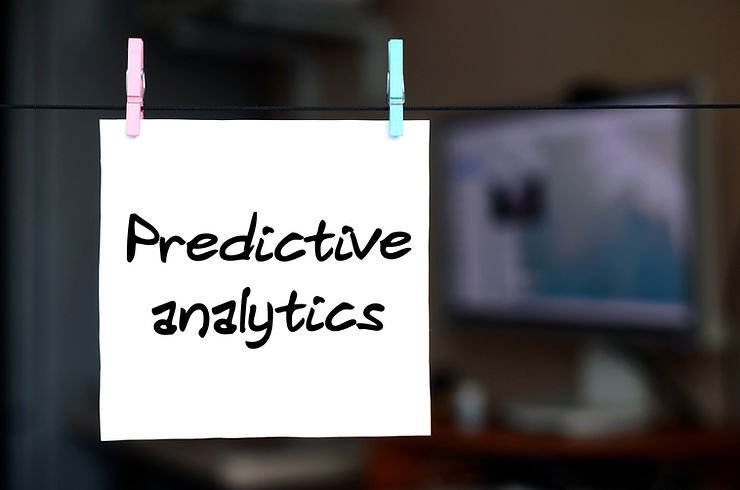The Importance of Data Analysis in E-commerce
Data Analysis helps you gain more insight and a deep understanding of processes and services. This analytical data provides many benefits such as Optimizing Prices, Predicting Demand In The Field, Simplify Trend Analysis, Giving Innovation Ideas, Develop Personalization Based on Interests, Improve Shopping Experience, Drive Sales, Increase Business Productivity, and Optimizing Services Better.
- Optimizing Prices
- Predicting Demand In The Field
- Simplifying Trend Analysis
- Giving Innovation Ideas
- Developing Personalization Based on Interests
- Improving Shopping Experience
- Driving Sales
- Increasing Business Productivity
- Optimizing Services Better
Optimizing Prices

Hold on to your shopping carts, folks, because we’re about to dive into the thrilling world of pricing optimization in the expansive realm of the e-commerce industry! Before you yawn, consider this: no matter how snazzy a website or how enticing its digital products are, the right pricing strategy can make or break an online business within the competitive landscape of the online marketplace. In a world where e-commerce sales continue to surge and selling products online is the norm, mastering the art of pricing becomes an essential component of digital commerce. It’s not just about maximizing revenue; it’s about enhancing the overall online shopping experience and ensuring sustainable growth for your e-commerce store and business online in the dynamic e-commerce industry.
The Dynamic Duo: Demand and Supply in E-Commerce Business
When it comes to pricing, demand, and supply are like Batman and Robin, or peanut butter and jelly – you can’t have one without the other. In e-commerce, understanding the relationship between demand and supply helps you set prices that maximize profits while keeping customers happy. Dynamic pricing algorithms are the heroes here, adjusting prices based on real-time data such as stock levels, competitor pricing, and customer behavior.
Just imagine having your very own digital Alfred, analyzing data to help you save Gotham (or your e-commerce business)!
Elasticity Extravaganza
Price elasticity is the measure of how sensitive customers are to price changes. In simpler terms, it’s like a rubber band – stretch it too far, and it’ll snap! Knowing your products’ price elasticity is crucial for setting optimal prices. For example, if your data analysis shows that a slight price increase won’t send customers fleeing, it’s time to crank up those profit margins. However, if your customers are more price-sensitive, you’ll need to tread carefully to avoid scaring them away.
The Psychological Power of Pricing in Online Store

Did you know that our brains process $9.99 differently than $10? It’s true! Psychological pricing is the e-commerce magician’s hat full of tricks that make customers feel they’re getting a great deal. Strategies like charm pricing (ending prices with .99 or .95) and bundle pricing (offering multiple products for a single price) can create the illusion of savings and increase the perceived value of your products.
Just remember: with great pricing power comes great responsibility. Don’t manipulate customers – use these tactics to showcase your products’ genuine value.
Keep an Eye on the Competition in Online Business

In the e-commerce Hunger Games, keeping up with the competition is crucial for survival. Monitoring your rivals’ pricing strategies can help you stay ahead of the curve and make informed decisions about your own pricing. You don’t want to be the last one standing when the dust settles, do you? Be proactive and use competitor data to make strategic adjustments that give your business the competitive edge it needs.
”Test, Analyze, Repeat” Remember that the journey to pricing perfection is an ongoing process. Regularly testing different pricing strategies and analyzing the results will keep your e-commerce business nimble and adaptable. By continually refining your approach, you’ll ensure your pricing strategy remains as fresh and effective as your morning cup of coffee.
Predicting Demand In The Field of Online Sales
In this thrilling section, we’ll explore how data analysis can help you forecast demand like a seasoned soothsayer, ensuring your e-commerce empire stays ahead of the game. So, strap on your wizard hats, and let’s conjure up some demand-predicting magic!

Harness the Power of Historical Data
When it comes to predicting demand, history isn’t just a dull subject taught in school – it’s a treasure trove of insights for your e-commerce store. By analyzing historical e-commerce transactions and sales data, you can identify trends and patterns that help you anticipate future demand. Think of it as e-commerce time travel – hop into your digital DeLorean and discover what worked (or didn’t) in the past to shape a successful future. This approach isn’t limited to online retail; it extends to the broader e-commerce website and business online domain. Whether you operate an e-commerce store or a physical store, understanding your historical sales data informs your business model, allowing you to make informed decisions that enhance your e-commerce website, online retailer presence, or your own website. In essence, it’s a practice that benefits e-commerce businesses across the board, guiding them toward a future marked by sustainable growth and success.
Tune In to Customer Behavior
Customers are the heart and soul of your e-commerce business, and their behavior can reveal valuable clues about future demand. Dive into data on browsing habits, cart abandonment, and purchase history to uncover preferences and needs. By understanding what makes your customers tick, you’ll be able to predict what they’ll want next – like an e-commerce Sherlock Holmes solving the mystery of demand.
Keep a Finger on the Pulse of the Market

When it comes to predicting demand, staying in tune with market trends is as essential as a killer guitar riff is to a rock anthem. Monitor industry news, social media chatter, and competitor activity to stay informed about the latest trends and fads. This way, you’ll be ready to ride the wave of demand like a skilled surfer, instead of being left behind in the wake.
Embrace the Art of Seasonality
Like the changing of the seasons, e-commerce demand can fluctuate throughout the year. Data analysis can help you decipher seasonal patterns and prepare for high-demand periods like the holiday shopping season or back-to-school sales. It’s like having an e-commerce weather forecast, helping you know when to stock up on umbrellas or sunscreen to meet the shifting needs of your customers.
Let Machine Learning Be Your Guide
If you’re feeling overwhelmed by the prospect of predicting demand, fear not – machine learning is here to save the day! By harnessing the power of advanced algorithms, machine learning can analyze vast amounts of data to generate accurate demand forecasts. It’s like having a team of e-commerce Avengers, using their data-crunching superpowers to secure the future of your business.
Simplifying Trend Analysis

Get ready to ride the rollercoaster of e-commerce trend analysis! In this exhilarating section, we’ll explore how to simplify trend analysis using data, so you can spot patterns and make data-driven decisions with the grace of a figure skater gliding on ice. So, lace up your analytical skates, and let’s glide into the world of trend analysis!
Unleash the Power of Visualization
A picture is worth a thousand words, and when it comes to trend analysis, data visualization is the artistic masterpiece that paints the story of your e-commerce success. Transform your raw data into stunning charts, graphs, and heatmaps that make spotting trends as easy as spotting a shooting star on a clear night. The right visualization tools will turn you into a trend-spotting Picasso, interpreting your data in ways that words alone could never convey.

Break It Down with Segmentation
To simplify trend analysis, think of your data as a giant, mouthwatering pizza. To savor every delicious morsel, you’ll need to slice it into smaller, more manageable pieces. Segment your data by customer demographics, product categories, and sales channels to reveal hidden patterns and trends. With data segmentation, you can create customized strategies for different groups, ensuring your marketing efforts are as targeted as an archer’s arrow.
Embrace the Pareto Principle

In the realm of trend analysis, the Pareto Principle (also known as the 80/20 rule) reigns supreme. This principle suggests that 80% of your results come from 20% of your efforts. By identifying the top-performing products, customers, or marketing campaigns, you can focus your resources on what truly drives success, like a laser-guided e-commerce trend-seeking missile.
Automate Your Analysis with the Right Tools
Trend analysis doesn’t have to be a daunting, time-consuming task. In the age of technology, an array of tools and platforms are at your disposal to simplify and automate your analysis. From Google Analytics to specialized e-commerce software, these digital assistants can collect, analyze, and present your data in a user-friendly format, making trend-spotting as enjoyable as watching your favorite sitcom.

Keep Your Finger on the Industry Pulse
Trend analysis isn’t just about examining your own data – it’s also about staying informed on industry trends, like a seasoned e-commerce detective. Subscribe to industry newsletters, join online forums, and follow thought leaders on social media to stay ahead of the curve.
By combining external insights with your own data, you’ll be able to make informed decisions that keep your e-commerce business on the cutting edge of success.
Giving Innovation Ideas
Fasten your seatbelts, e-commerce enthusiasts, because we’re about to embark on a thrilling journey through the land of innovative ideas powered by data analysis! With data as our trusty compass, we’ll uncover new territories to conquer and creative ways to elevate your e-commerce business.

Personalization Paradise
Using data analysis to create a personalized shopping experience is like tailoring a bespoke suit for each customer – and who doesn’t love feeling like a VIP? Harness the power of customer data to offer personalized product recommendations, custom promotions, and tailored content that makes your customers feel like your e-commerce site was designed just for them.
The result? A loyal fan base that keeps coming back for more of your top-notch personalized service.

The Chatbot Chronicles
In the realm of e-commerce, chatbots are the droids you’re looking for! Data analysis can help you create intelligent, data-driven chatbots that understand customer preferences, answer questions, and provide assistance 24/7. It’s like having a team of friendly cyborg sales assistants at your beck and call, ready to wow your customers with their impressive knowledge and helpfulness.
Augmented Reality Adventures

Why merely describe a product when you can bring it to life using augmented reality (AR)? Data analysis can help you identify trends and customer preferences, paving the way for immersive AR experiences that showcase your products in all their glory. From virtually trying on clothes to placing furniture in a room, AR adds a whole new dimension to the shopping experience – and it’s only a matter of time before teleportation becomes a reality (we hope)!
Subscription Box Bonanza
Unveil the power of curated subscription boxes using data analysis to determine customer interests and preferences. Combine the excitement of a surprise gift with the convenience of regular deliveries, and you’ve got a recipe for e-commerce success. Analyze customer data to handpick items that cater to individual tastes, and watch as your customers eagerly await their next box of delights.
Voice Commerce Virtuoso
As voice-activated devices become increasingly popular, it’s time to make some noise in the world of voice commerce. Use data analysis to understand customer search patterns, preferences, and language, allowing you to create voice-activated shopping experiences that are as smooth as silk. Soon, your e-commerce business will be singing the sweet symphony of success.
Developing Personalization Based on Interests

Personalization, the art of molding your services to perfectly match the distinct needs and preferences of each customer, is a powerful tool in today’s competitive business landscape. By carefully crafting tailored experiences, you can make your customers feel valued and understood, resulting in increased loyalty and satisfaction. This customization magic can be achieved through various means, such as deploying laser-focused marketing strategies that resonate with specific customer segments, curating product recommendations that align seamlessly with individual tastes and desires, and providing personalized customer service that addresses unique concerns and requirements. By embracing the power of personalization, you not only elevate the overall customer experience but also create a lasting impression that fosters strong connections and enduring brand loyalty.
By leveraging customer data, you can better understand each customer’s preferences and use this information to provide a more personalized experience. For example, you could send targeted marketing emails based on each customer’s purchase history or offer product recommendations based on their browsing history.
Improving Shopping Experience
Welcome to the magical world of e-commerce, where customer satisfaction is king, and enchanting shopping experiences are the key to unlocking the hearts (and wallets) of your clientele. In this whimsical section, we’ll reveal how data analysis can help you transform your e-commerce platform into a delightful shopping wonderland.

Personalize the Journey
Imagine a world where each customer’s e-commerce experience is tailored to their unique tastes and desires – a digital shopping utopia! Data analysis can make this dream a reality by allowing you to craft personalized product recommendations, targeted promotions, and customized content. Your customers will feel like they’ve stepped into a wonderland designed just for them, and you’ll enjoy the rewards of increased loyalty and sales.
Streamline the Path to Purchase
Navigating the twists and turns of a convoluted e-commerce site can be as frustrating as solving a labyrinth riddle. Thankfully, data analysis can help you identify bottlenecks and obstacles in the customer journey, allowing you to optimize your site’s navigation and streamline the path to purchase. It’s like having a wise digital minotaur guiding your customers through the maze, leading them straight to the checkout.
Optimize Your Site’s Performance

Slow-loading pages and unresponsive elements are the pesky gremlins of e-commerce, wreaking havoc on your customer’s shopping experience. With data analysis, you can identify areas where your site’s performance is lacking and banish these gremlins for good.
Your customers will enjoy a seamless, speedy shopping experience – because nobody likes waiting for pages to load when there’s shopping to be done!
Enhance Customer Support

In the kingdom of e-commerce, customer support is the royal court, tending to the needs of your loyal subjects. Data analysis can help you identify common customer pain points, allowing you to address them proactively and create a support system that’s as efficient as a well-oiled machine.
From smart chatbots to detailed FAQs, your customer support will shine like a beacon of helpfulness in the e-commerce realm.
A/B Test Your Way to Perfection

When it comes to creating an unforgettable shopping experience, experimentation is the name of the game. Harness the power of data analysis to conduct A/B tests, comparing different versions of your site or marketing campaigns to determine what resonates best with your customers. It’s like having a magical crystal ball, revealing the secrets of what truly makes your customers tick – and click!
Driving Sales
We’re about to embark on a high-octane journey through the exhilarating world of e-commerce sales acceleration. In this thrilling section, we’ll explore how data analysis can fuel your sales engine, propelling your e-commerce business to the winner’s circle.

Turbocharge Your Marketing Campaigns
Data analysis is like a secret nitrous oxide injection for your marketing campaigns, giving them the extra boost they need to leave your competitors in the dust. By analyzing customer behavior, preferences, and demographics, you can create laser-focused marketing campaigns that hit the bullseye every time. Kiss generic, one-size-fits-all marketing goodbye, and say hello to hyper-targeted promotions that resonate with your audience.
Rev Up Your Product Offerings
Not all products are created equal – some sell like hotcakes, while others gather digital dust on your virtual shelves. Data analysis can help you identify your star performers and weed out the underperformers, ensuring your inventory is always stocked with crowd-pleasers. It’s like having a team of top-notch e-commerce pit crew members, fine-tuning your product lineup for optimal performance.
Optimize Pricing for Maximum Profitability

Pricing is a delicate dance in the world of e-commerce, and data analysis is your choreographer extraordinaire. By analyzing market trends, competitor pricing, and customer behavior, you can find the sweet spot where your prices maximize both sales volume and profit margins. It’s the perfect harmony of supply and demand, orchestrated by your data maestro.
Boost Customer Retention and Loyalty
In the high-stakes race of e-commerce sales, customer retention and loyalty are the keys to victory. Data analysis helps you understand what makes your customers tick, allowing you to create tailored rewards programs, special offers, and personalized communications that keep them coming back for more. It’s like having your very own e-commerce fan club, cheering you on as you speed toward success.
Refine Your Sales Funnel

Navigating the twists and turns of the e-commerce sales funnel can be a wild ride. But fear not, for data analysis is here to help you smooth out the bumps and streamline the journey. Identify areas of friction, drop-off points, and opportunities for upselling, then fine-tune your funnel to create a seamless, high-conversion sales experience. It’s like cruising down the highway to e-commerce success with the top down and the wind in your hair.
Increasing Business Productivity
Ladies and gentlemen, prepare to be dazzled as we unveil the hidden secrets of e-commerce productivity, powered by none other than our trusty companion, data analysis! Join us on this exhilarating journey as we explore how harnessing the power of data can help you optimize your business operations, streamline processes, and achieve peak efficiency. So, without further ado, let’s dive into the captivating world of data-driven productivity!

Automate Like a Pro
Unleash the power of automation and watch as your e-commerce business transforms into a well-oiled productivity machine! Data analysis helps you identify repetitive tasks and processes that can be automated, freeing up your team’s valuable time to focus on more critical tasks. It’s like having an army of tireless robots at your command, working around the clock to keep your business running smoothly.
Master the Art of Inventory Management

In the realm of e-commerce, inventory management can be a tricky balancing act. But fear not, for data analysis is here to save the day! By analyzing sales trends, customer preferences, and seasonal fluctuations, you can optimize your inventory levels and minimize stockouts or overstock situations. It’s like having a crystal ball that predicts your inventory needs with uncanny accuracy.
Optimize Order Fulfillment

Delivering a top-notch customer experience means getting your products into your customers’ hands as quickly and efficiently as possible. Data analysis helps you streamline your order fulfillment process, identifying bottlenecks and inefficiencies that can be eliminated or improved. It’s like having a world-class logistics maestro, orchestrating the perfect symphony of e-commerce deliveries.
Unearth Hidden Opportunities
The world of e-commerce is teeming with hidden gems, just waiting to be discovered by those with the right tools. Data analysis is your trusty treasure map, guiding you to lucrative new markets, untapped customer segments, and opportunities for expansion. It’s like embarking on an exhilarating quest for e-commerce gold, with data as your infallible compass.
Enhance Team Collaboration
When it comes to e-commerce productivity, teamwork makes the dream work! Data analysis can help you identify areas where your team’s collaboration and communication could be improved, ultimately boosting efficiency and morale. It’s like having a secret formula for turning your e-commerce squad into a tight-knit, high-performing dream team.
Optimizing Services Better
In the competitive world of e-commerce, optimizing your services is key to staying ahead of the game. As more and more businesses move online, it’s important to ensure that your services are better than those of your competitors. One way to optimize your e-commerce services is to focus on customer data analysis.

By analyzing customer data, you can gain insights into their preferences, behaviors, and needs. This information can be used to tailor your services to better meet their needs and improve their overall experience with your brand.
For example, if you notice that a particular product is frequently abandoned in customers’ shopping carts, you can investigate why this is happening. Perhaps the product description is unclear or the checkout process is too complicated. By addressing these issues, you can increase the likelihood of customers completing their purchases and improve your conversion rates.
One of the most tangible manifestations of digital transformation is the incredible abundance of data now available in the world, growing exponentially with each passing day. As we sail through this digital age, data has become the new currency, powering businesses and driving innovation like never before. Yet, amidst this sea of information, it’s essential to recognize that not all data is created equal. If you happen to base your decisions on the wrong data or inaccurately interpret it, you could find yourself spiraling down a treacherous path that leads to misguided strategies, wasted resources, and ultimately, business failure. Navigating this data-rich environment requires vigilance, discernment, and a keen understanding of how to separate the wheat from the chaff, ensuring that your data-driven decisions are well-informed and precisely targeted for success. Let’s start! Learning data step by step from the simplest to the most complex steps with us.

